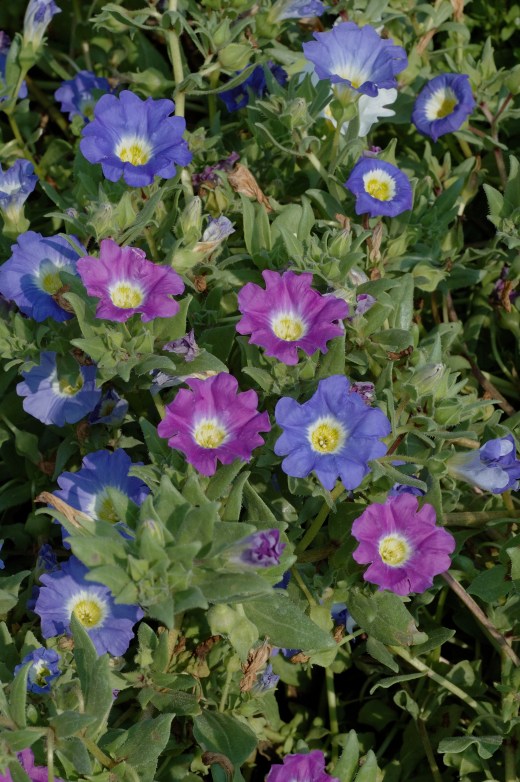Amazing annuals: Nolana
Creeping carpets of stunning blue flowers on this versatile annual.

I really want to move on from the Ns and I realise I have missed out molucella (bells of Ireland) so I may have to go back a step. I was tempted to ignore nolana because I do not often grow it but, I have grown it and I am sure it is better in warmer climates so, for the sake of some sort of completeness, I will give it a passing mention.
Nolana are from Chile and are yet another beauty from the Solanaceae, though the flowers do resemble annual convolvulus as much as petunias. They are typically blue, with a white centre, in the most commonly grown N. paradoxa, but they can be mauve too as you may have worked out for yourself. The plant is low, hugging the ground, spreading to at least 60cm across and bears its flowers, singly in the leaf axils, for many months. It prefers a sunny, warm place and is best treated as a half hardy annual. The lax habit makes it suitable for baskets and cascading over the side of pots.
Apparently the ‘paradoxa’ bit refers to the seeds or seed pods of this species which are unlike the other species. However in most nolana they are mericarps – single-seeded fruits – unlike the fruits of most Solanaceae (think tomato). But then, since nolana alone has seed pods unlike the rest of the Solanaceae, what does that actually mean? I don’t know. Nolana paradoxa reached Europe in 1820 and is one of 18-85 species (depending on what the botanists have decided at the time) from Chile and Peru.
I am curiously ambivalent about nolana and I am not sure why. If you have the means of enthusing me please let me know.
I think that means we can move on to the Ps next and some exciting annuals.
I’m afraid i wont be shouting for more on nolanas. Never heard of them, and from your post , they are very unlikely to make it to my very cold garden anytime soon !
Bring on the Ps ! Petunias, phlox and ???
.. and poppies!
Is it similar to Calibrachoa? Although not familiar with it, I can understand the ambivalence because I feel the same way about Calibrchoa. I know it is pretty, but I am not impressed by it.
mmm – a bit I suppose but a bit less well behaved.
Well, in this situation, that could be an advantage. I am none too keen on Calibrachoa, partly because it look artificial, and is ‘too’ perfect.